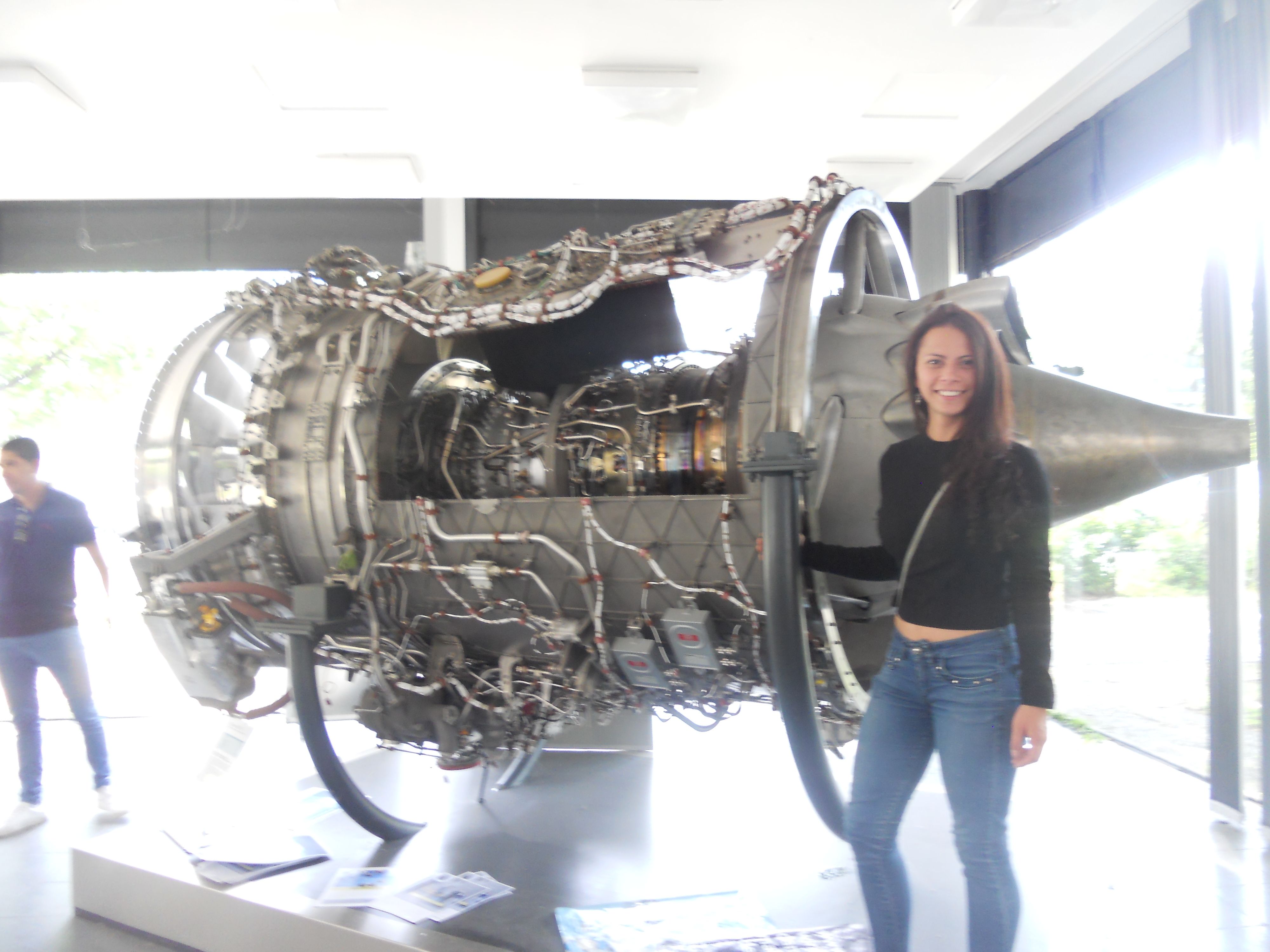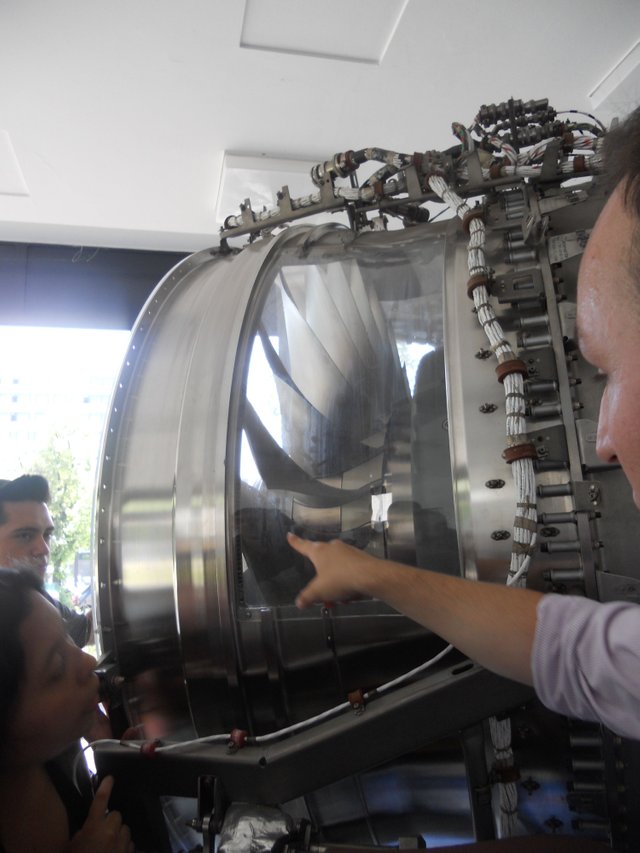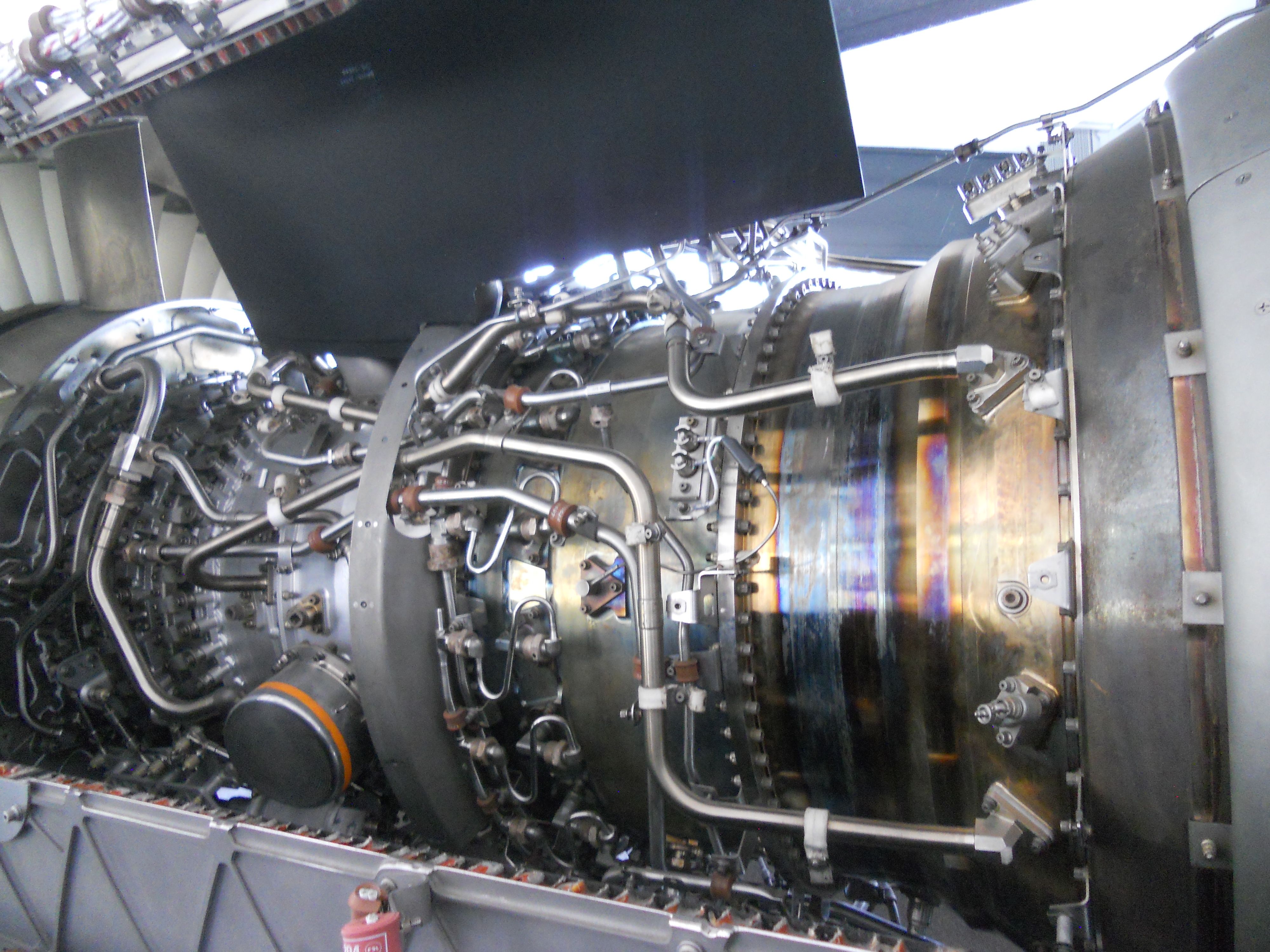¿Cómo funciona una turbina de avión? | How does an airplane turbine works?
¿Alguna vez han visto la turbina de un avión de cerca? Bien, yo tampoco hasta antes de ir a Berlín. Hoy les voy a contar de una forma sencilla cómo funcionan las turbinas de aire y en esencia, cómo es que logran mantener un avión a 12000 metros de altura. Ayer, fuimos a la Universidad Técnica de Berlín, la cual tiene grupos de investigación muy interesantes sobre, por ejemplo, cómo influye el sonido de las llamas a dentro de una turbina de gas o de aire en el proceso de combustión interno o sobre el diseño de turbinas eólicas.
Have you ever seen a plane turbine really close? Well, I didn't before going to Berlin. Today I'll tell you in a simple way how do air turbines work and essentially, how is that they are able to hold a plane at 12000 meters high. Yesterday we went to the Technical University of Berlin that has really cool research groups about how accoustic caused for flames inside a gas and air turbine inference on the intern combustion process and also about the designe of eolic turbines.

Yo junto a una turbina de un Boeing 717 This is me next to one turbine of a Boeing 717
El avión Boeing 717 empezó a usarse en 1999 y tenía motores BR700. Por alguna razón, no tengo idea porqué, esta turbina estaba en una de las facultades de la universidad y aunque nadie estaba ahí para darnos más información que la de los poster que habían en la sala, mi profesor Carlos nos explicó cómo funciona, lo cual es lo que quiero compartirles.
The Boeing 717 plane started working on 1999 and had BR700 motors. For some reason, I have no idea what, this turbine was in one of the faculties of the university (no one was there to give us further info) but my teacher Carlos explained us how it works, which is our interest now.

Mi profe mostrándonos el rotor de la turbina My teacher showing us the rotor of the turbine
Las turbinas tienen dos partes esenciales; el estator y el rotor. La mayoría de veces, el rotor consiste en varias partes rotantes, de forma que la eficiencia sea la máxima. El objetivo de una turbina es obtener energía mecánica (de movimiento) utilizando gas o vapor a alta temperatura y presión. Los gases y el vapor pueden ser producidos a través de diferentes procesos como combustión, en el caso de los gases, y hirviendo agua en una caldera en el caso del vapor, sin embargo, ambos procesos requieren de combustible para funcionar.
Turbines have 2 essential parts; stator and rotor. Most of times, rotor consists of several rotating parts, that way efficiency is higher. The objective of a turbine is to get mechanical energy using gas or steam with high pressure and temperature. The gases and steam may be produce through different processes such as combustion in the case of gases and boiling water in a boiler in the case of steam, although, they both need a fuel to function.
Proceso de combustión | Combustion process
La combustión es un proceso en el que material orgánico se pone en contacto con oxígeno y una fuente de ignición (la chispa, por así decirlo) para producir dióxido de carbono, agua, residuos como óxidos y otros, y por supuesto, energía.
Combustion is a process where an organic matter gets in contact with oxygen and a source of ignition to produce carbon dioxide, water, some residues like oxides and, off course, energy.

Esta es la reacción de combustión simplificada utilizando propano como fuente de carbono This is the simplified reaction of combustion using propane as carbon source

En un avión se utilizan combustibles fósiles, es decir, hidrocarburos. Éstos son la fuente de carbono con la que se lleva a cabo la reacción química explicada anteriormente. El aire ingresa por la parte delantera (que parece la punta de un lápiz en la última foto), el combustible fluye por los tubos que recorren la parte interna y juntos entran a la cámara de combustión, en donde ocurre la reacción y se producen los gases. Ésta se identifica en la siguiente imagen por el color tornasol que toma el metal debido a la alta temperatura que soporta (800°C mas o menos).
Planes use fossil fuels, it means, hydrocarbons. These are carbon source with which chemical reaction explained before is carried out. The inlet air is located in the front (that looks like a pencil tip in the last pic), the fuel flows through the tubes that are all around the intern part and they both get into the combustion chamber, where the reaction produce the gases. You can see this combustion chamber in the next pic because of the litmus color that the metal has due to the high temperature that supports (~800 °C).

This is the intern part of the turbine Esta es la parte interna de la turbina
Entonces, cuando los gases son producidos son liberados creando una fuerza de propulsión que permite que el avión siga su camino.
Interesting! (but the girl next to the turbine even more.) =)
jajaja thanks :)
Excelente artículo. ¡Saludos!
¡Mil Gracias!
Nice info